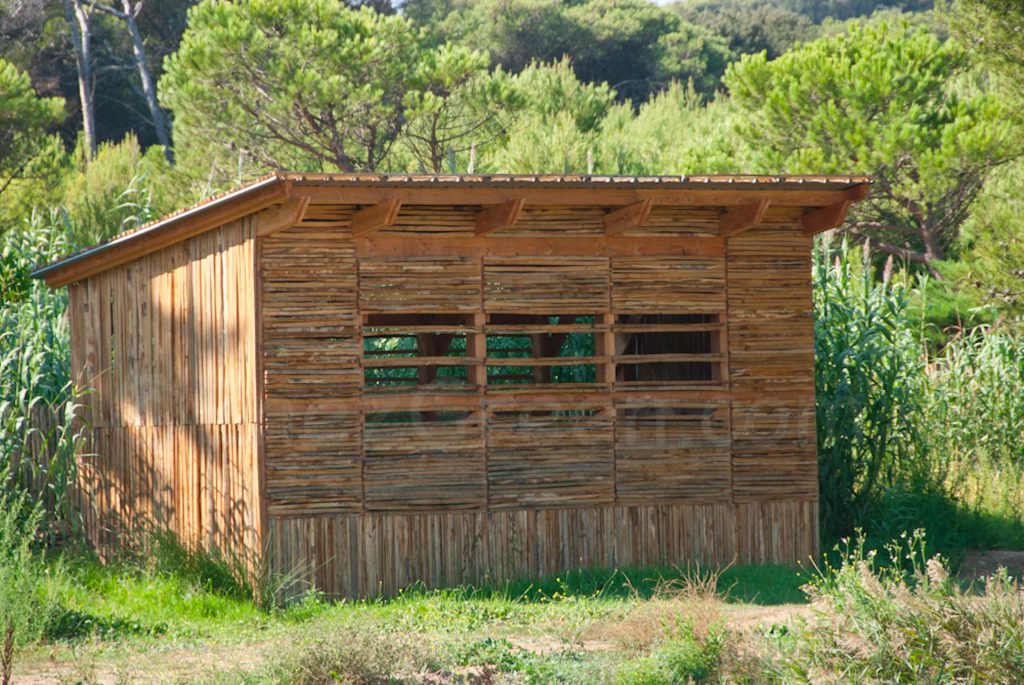Bastion of traditional orchards of Provence
Partly wild and half-cultivated, Porquerolles is a mosaic of Provençal landscapes shaped by several generations of inhabitants. These beautiful landscapes are home to an exceptional heritage: an orchard of over 700 varieties of fruit trees!
Resistance against the standardisation of supermarkets
You will find a unique collection which includes many authentic varieties, that no longer exist on the continent since the advent of industrial farming: more than 154 varieties of olive trees, of French, Italian and Spanish origins, 300 varieties of figs from the Mediterranean basin, 60 mulberry varieties from around the world, over 200 local varieties of peaches from Provence and the Rhone Valley, over 60 varieties of apricot and over 22 varieties of almond trees.
A bastion of traditional Provençal orchard, the Conservatory’s mission is to safeguard the Mediterranean fruit varieties. Jean-Paul Roger, head of the conservatory is strongly fighting against the standardization of the supermarket era. He regrets that ‘a growing number of species have disappeared these last 50 years following the destruction of their natural habitats and the advent of industrial agriculture. High-yielding cultivars have today replaced local varieties and the result is that all varieties looks similar and are tasteless.’ He then lists the five criteria’s that are required today by supermarkets: a beautiful colour instead of maturity, a large size, an early development, an annual production and resistance to handling and transport. “Here we have precisely everything from large to small, yellow, sweet, red, late… Life is diversity!’ he adds.
Restoring grandpa’s traditional Provencal orchard
Since his arrival in Porquerolles in 1978, one year before the creation of the conservatory, this agricultural engineer, managing the agricultural domain and varietal collections, has invested himself with one goal in mind: to restore grandpa’s traditional Provencal orchard“where you could find everything’ and to prevent the disappearance of ancient varieties, heritage of the regional and national homeland. For over 20 years, he has conducted a real investigative work and traveled the most isolated countryside of Provence in search of forgotten local fruit varieties. “We discussed with municipalities and knocked at the doors of the deans of the villages to gather information. We interviewed hundreds of elder farmers,’ he explains. These cuttings from all corners of Provence were grafted, and flourish today in the lands of Porquerolles, which houses a valuable national collection.
The best way to discover them is to loose your way in the orchard with Jean-Paul Roger. Along with the song of the cicadas, he whispers the picturesque and poetic names of these forgotten varieties that smell good the old country and the authentic way of life. ‘Here you have the autumn figs, the best and most moving with its flowing tears. There is “La Grise de Beaucaire” and further in the peach area, “La Sanguine de Manosque” (a reddish local variety), “le Téton de Venus” (nipple of Venus) and la “Grosse Mignonne” (big cute), some much tasty varieties with their own specific character…’
Effective biological control
Almost three quarters of plants grown in France have disappeared since the last century. ‘Each time, these are genes that are gone forever and we did not quite measure their importance for nature’s balance. Our role is precisely to maintain the widest genetic base possible to anticipate unpredictable future needs,’ says Jean-Paul Roger. Porquerolles’ varietal collections are thus a bank of genes meant to adapt to the vagaries of the environment, to agricultural conditions, colours, scents, flavors and other characteristics.
Towards a sustainable and non-chemical agriculture
The interest of the older varieties also lies in their natural capacity to resist against pests and diseases, ‘each variety has a different tolerance gene to fight against different insects which helped in the past to avoid chemical treatment!’ For the past fifteen years, the Conservatory’s team members have been experimenting biological control to support a sustainable and non-chemical agriculture. By introducing genes for hardiness in species prone to disease, but appreciated for its size and taste, it is possible to create hybrids that combine the qualities of both parents. Against pests of the olive tree, the team uses their natural enemies and promotes their presence in order to eradicate them. If these agricultural techniques are time consuming, their effectiveness is still recognised and sustainable.
A unique seed bank
Each year, the staff in collaboration with scientists from the National Institute for Agronomic Research (INRA) and the National Natural History Museum (MNHN) collects thousands of seeds in the natural environment. Once sorted and cleaned, the seeds are carefully preserved in the cold or put in multiplication. Each plant is conserved according to its origin and is divided into several seed lots, using the most modern processes: nearly 4,800 lots in a cold room at 5 °C and over 3,350 batches in a freezer at -25 °C. The rare ones and the most threatened are lyophilized.
Complementarity between in situ and ex-site conservation
About 2,000 species of various origins are thus preserved. They are studied from every angle and also replanted into the wild. According to Jean-Paul Roger, ex-site and in situ conservation are quite complementary. The agricultural engineer takes as an example the restoration of degraded dunes in the region of Hyères. The exercise was successful following the introduction of rare native plants in the affected environments.




